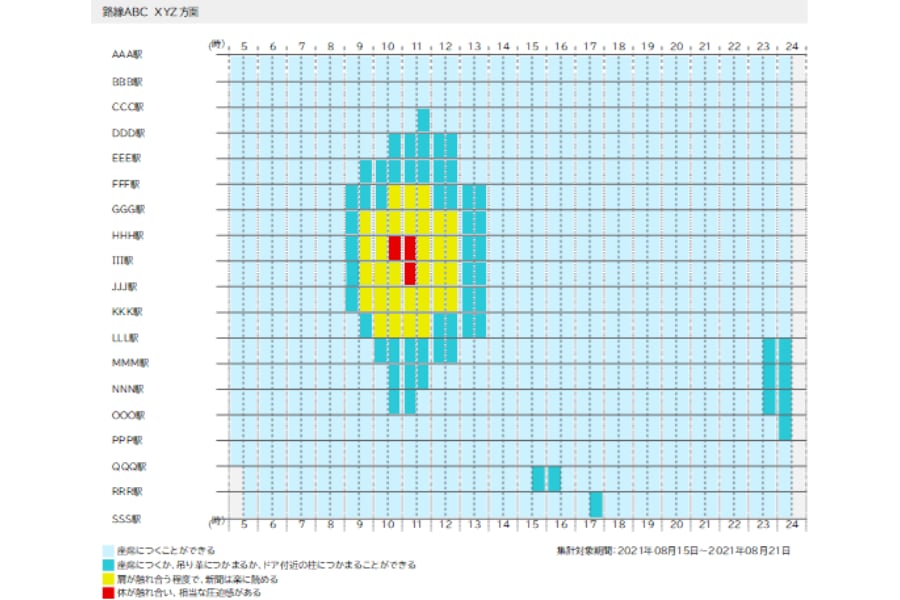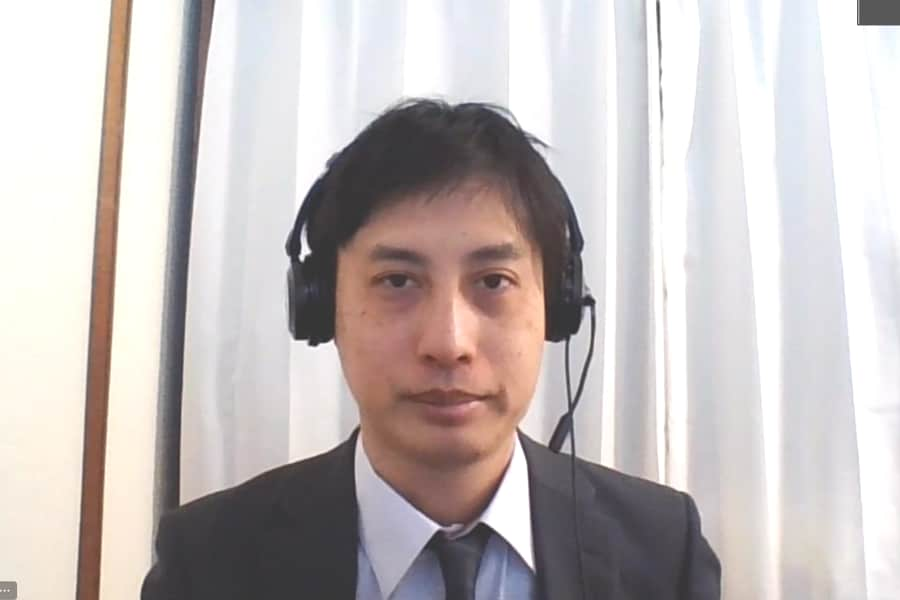
As COVID-19 infections increase, crowds need to be avoided to prevent the spread of infection. Hitachi, Ltd. has therefore developed Human Flow Prediction Service that uses AI and simulation technology to predict the flow of passengers on trains, buses, and other modes of public transportation, and provides the analysis results. The service was launched on January 27, 2022. The congestion prediction information obtained from this service can be used to help prevent COVID-19 infections on public transportation, as well as to improve operational efficiency and to reduce costs for transport providers, thereby increasing the expectations of such providers.
COVID-19 is raging across the world, and the situation continues to be unpredictable. Japan’s Ministry of Health, Labour and Welfare is calling for the public to avoid the "Three Cs" (i.e., confined and enclosed spaces, crowded places, and close-contact settings) because infections increase when there are more opportunities for large numbers of people to gather together.
Modes of public transportation (such as trains and buses), which are essential for commuting to work, school, and going out in general, are no exception. Passengers are encouraged to board at times that avoid congestion in order to protect themselves from the virus.
Amid this backdrop, Hitachi, Ltd. has developed a passenger flow prediction service that predicts and simulates passenger flows and that provides the results of congestion information analysis. The service was launched on January 27, 2022 for transport providers that operate railroads, buses, and other modes of public transportation.
Masaki Miwa of Hitachi, Ltd., who is involved in the development of the service, noted: "There is a growing need to understand congestion at stations, on trains, and at public facilities." Miwa added: "We would like to contribute to the realization of comfortable travel by avoiding congestion and limiting crowding."

Overview of congestion rates between stations and time of day for each line, as indicated by color
Human Flow Prediction Service uses Hitachi's proprietary AI and simulation technologies to predict future congestion conditions by analyzing data on past congestion conditions held by transport providers.
Congestion information calculated like this can be displayed in multiple levels, such as "Can sit," "Can stand comfortably," "Shoulders touch," and "Very Crowded," depending on the situation of each transport provider, and this information can be transmitted in 30-minute increments.
By delivering such information to passengers, transport providers can help passengers choose travel routes that avoid congestion from the point of origin to their destination.
Moreover, the service enables transport providers to optimize their timetables, thereby increasing operational efficiency and reducing costs.
Miwa said: "Human Flow Prediction Service will be able to review the number of trains and the intervals between trains based on future travel demand calculated by AI from several years' worth of data. This enables providers to reduce operational costs, such as by reducing the number of trains while taking care not to overcrowd the system."
Furthermore, by simulating the maintenance of tracks and trains during the day, maintenance that used to have to be performed late at night can now be performed during the day, leading to workstyle reforms at transport providers.
Miwa explained: "Transportation operators often perform maintenance on tracks and trains late at night on unreasonable schedules, partly due to a lack of manpower. However, by using accurate congestion information, it is possible to temporarily stop traffic and perform maintenance during the day when there are more workers and fewer passengers. This enables providers to optimize their maintenance plans."

Masaki Miwa of Hitachi, Ltd. during the interview online
Miwa says that the spread of COVID-19 was the catalyst for developing this service.
In the past, congestion was determined by rough estimates of the number of passengers at certain times of the day based on visual measurements and other factors. However, in response to the spread of COVID-19, train operators are now making requests in order to be able to accurately determine congestion information for each and every train.
"Rail operators and passengers have long known that it is crowded at certain times of day. However, as people become more conscious of COVID-19 infection prevention measures, we are hearing more and more requests for accurate information on train congestion on the timetable, rather than this kind of rough information," said Miwa.
The development of the service began in response to such feedback, but it was a struggle to make the service compatible with the wide variety of operating patterns of transport providers. However, by leveraging Hitachi's proprietary technology, they were able to solve this problem.
Miwa remarked: "Travel times, routes, and other operating patterns are completely different for each transport provider. In order for this service to be widely used, it must be able to handle any operating pattern. It is technically very difficult to achieve this, but thanks to our AI and simulation technology, we are now able to handle a wide range of operating patterns."

Although Human Flow Prediction Service has been developed, there are further issues to be addressed. At stations in the Tokyo metropolitan area, where multiple train and bus lines converge, it is difficult to estimate station congestion using data from a single transport provider alone. Therefore, Miwa is considering analyzing congestion at such stations by aggregating information from multiple providers.
"We believe that Hitachi's experience in providing congestion information at stations where it would be impossible to ascertain the flow of people on our own will enable us to accumulate knowledge of how people move and to provide substantial congestion information to customers."
Expectations are growing for Human Flow Prediction Service to improve travel convenience for passengers and to improve the operational efficiency of transport providers. Miwa discusses his future aspirations as follows:
"I want to help public transport passengers make better choices when it comes to preventing infection from COVID-19. If we can make this service widely available to modes of public transport, passengers will be able to consider alternative routes that take into account congestion information. We will contribute to the realization of comfortable travel on modes of public transport by avoiding congestion."